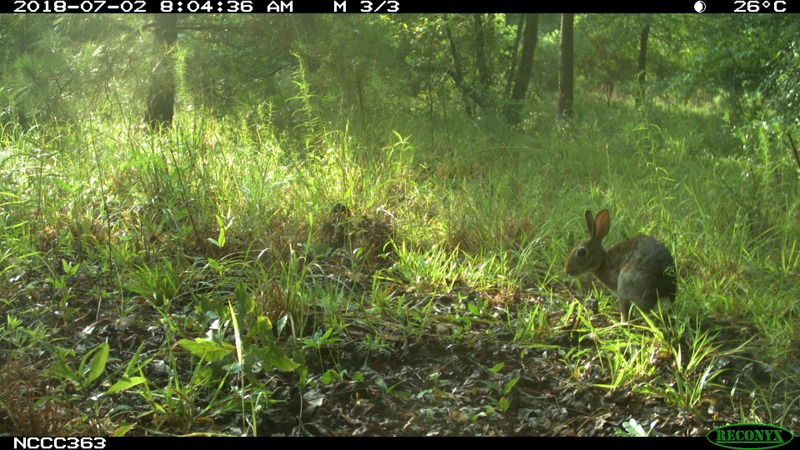In Hotter Regions, Mammals Seek Forests, Avoid Human Habitats
For immediate release ‐ December 04, 2023
Contact: Jon Pishney, 919.707.8083. Images available upon request

The cool of the forest is a welcome escape on a hot day. This is especially true for mammals in North America’s hottest regions, according to a study from the University of California, Davis. The study indicates that, as the climate warms, preserving forest cover will be increasingly important for wildlife conservation.
The study, published today in the journal PNAS, found that North American mammals — from pumas, wolves and bears to rabbits, deer and opossums — consistently depend on forests and avoid cities, farms and other human-dominated areas in hotter climes. In fact, mammals are, on average, 50 percent more likely to occupy forests than open habitats in hot regions. The opposite was true in the coldest regions.
“Different populations of the same species respond differently to habitat based on where they are,” said lead author Mahdieh Tourani, who conducted the study while a postdoctoral researcher at UC Davis and is now an assistant professor of quantitative ecology at the University of Montana, Missoula. “Climate is mediating that difference.”
Tourani points to the eastern cottontail as an example. The study showed the common rabbit preferred forests in hotter areas while preferring human-dominated habitat in colder regions.
Not one-size-fits-all
Her example illustrates “intraspecific variation,” which the study found to be pervasive across all North America’s mammals. This runs contrary to a longstanding practice in conservation biology of treating all populations of the same species the same.
“This shows that not all populations of the same species respond the same.” Said co-author Roland Kays, from the NC Museum of Natural Sciences and NC State University, “Even within the state of North Carolina we found differences, with cottontail rabbits in the cooler western mountains being less dependent on forest habitat whereas in hot regions they were 50 percent more likely to use forest.”
A pathway for conservation
For the study, the authors leveraged Snapshot USA, a collaborative monitoring program led by the NC Museum of Natural Sciences with thousands of camera trap locations across the country.
“We analyzed 150,000 records of 29 mammal species using community occupancy models,” Tourani said. “These models allowed us to study how mammals respond to habitat types across their ranges while accounting for the fact that species may be in an area, but we did not record their presence because the species is rare or elusive.”
“To get at these differences between populations of the same species you really need a lot of data across a large area,” said Kays. “The network of Snapshot USA scientists running camera traps made it possible to ask this research question in the first place.”
The study provides a pathway for conservation managers to tailor efforts to conserve and establish protected areas, as well as enhance working landscapes, like farms, pastures and developed areas.
Additional co-authors included Rahel Sollmann of the Leibniz Institute for Zoo and Wildlife Research, Jorge Ahumada of Conservation International and Arizona State University, and Eric Fegraus of Conservation International. The study was funded by Conservation International.
https://doi.org/10.1073/pnas.2304411120
For more information about our upcoming activities, conservation news and groundbreaking research, follow @NaturalSciences on Instagram, Twitter and Facebook.

